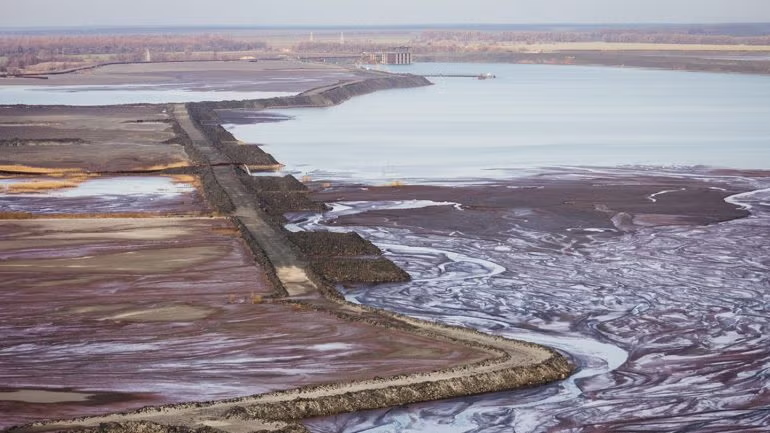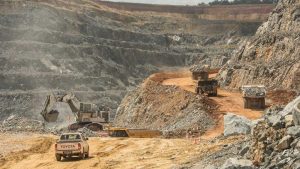A catastrophic mine spill in Zambia has unleashed a legal and environmental battle with global implications. Residents are demanding $420 million (K9.98 trillion) in compensation from Chinese state-owned Sino Metals Leach Zambia, after a February incident released a torrent of acidic waste laden with toxic heavy metals into local communities and waterways.
The scale of the disaster, described by experts as potentially among the worst mining spills in history, has raised questions about corporate accountability, government oversight, and the true cost of resource extraction in Africa.
Communities in Crisis
For the people of Kalusale, a rural community on the edge of the contaminated zone, life has been turned upside down. Crops are failing, water sources are tainted, and families report unexplained illnesses.
Two legal teams are now fighting on their behalf:
- Malisa & Partners Legal Practitioners is seeking $220 million to relocate 47 households trapped in the contamination zone, while also covering the costs of medical testing and long-term treatment.
- Malambo & Co. is demanding $200 million to establish an emergency relief fund for affected residents.
The lawsuits underscore a grim reality: communities often shoulder the full weight of industrial disasters, while companies contest responsibility in the courts.
How Bad Was the Spill?
Initial estimates came from Drizit Environmental, an independent consultancy hired by Sino Metals itself. The firm concluded that up to 1.5 million tonnes of waste had been released, contaminating soils, rivers, and groundwater. Even more alarming, it found that 900,000m³ of toxic tailings remain in the environment.
Tests revealed a cocktail of dangerous substances: cyanide, arsenic, copper, lead, chromium, cadmium, and zinc, pollutants that can cause cancer, organ damage, birth defects, and long-term ecological collapse.
But instead of addressing the findings, Sino Metals abruptly terminated Drizit’s contract, claiming flaws in its methodology. Drizit has stood firm, accusing the company of attempting to bury evidence of the spill’s true magnitude.
A Cautious Government Response
The Zambian Government has faced criticism for its muted response. In the immediate aftermath, officials downplayed the risks, urging calm and insisting the situation was under control.
Only after further investigation did authorities concede that dangerous levels of heavy metals had been detected in water samples. Despite this, Lusaka has not formally acknowledged responsibility on the part of Sino Metals and has yet to respond to the latest compensation demands.
This hesitancy has fueled suspicion that the government is balancing public safety against economic ties with Chinese investors, who play a dominant role in Zambia’s copper-mining industry.
International Scrutiny
The disaster has not gone unnoticed abroad. Both the United States and Chinese governments have weighed in.
- The Chinese Foreign Ministry emphasized that Sino Metals is cooperating with Zambian authorities to address the crisis.
- The U.S. Embassy and other foreign missions, however, have issued stark warnings, advising their citizens to avoid the affected area entirely due to ongoing health risks.
The competing narratives highlight how the fallout from one mine spill has spilled into geopolitics, touching on questions of foreign investment, environmental responsibility, and local sovereignty.
A Familiar Pattern?
Environmental advocates say the case reflects a troubling pattern across Africa’s mining belt: when accidents occur, the burden falls disproportionately on poor, rural communities with little recourse to justice.
“The affected families are essentially prisoners on poisoned land,” one lawyer involved in the case argued. “Unless accountability is enforced, these disasters will keep repeating.”
Zambia, one of the world’s leading copper producers, has long courted foreign mining investment. But critics warn that without tighter regulation and independent oversight, disasters like this will continue to erode both public trust and the nation’s natural resources.
What Comes Next
For now, the fate of the $420 million compensation claim remains uncertain. Sino Metals has not issued a public response to the legal demands, and the Zambian Government has remained silent. Meanwhile, villagers in Kalusale continue to live with contaminated soil and water.
The case has become more than just a fight for damages, it is a test of whether mining companies and governments can be held accountable when profits come at the expense of human lives and the environment.
As pressure mounts from communities, lawyers, and foreign governments, one question dominates: will Zambia deliver justice to its people, or will this disaster fade into the background of global mining’s troubled legacy?
RELATED: Innovation in tailings management: Game changer for African mining







